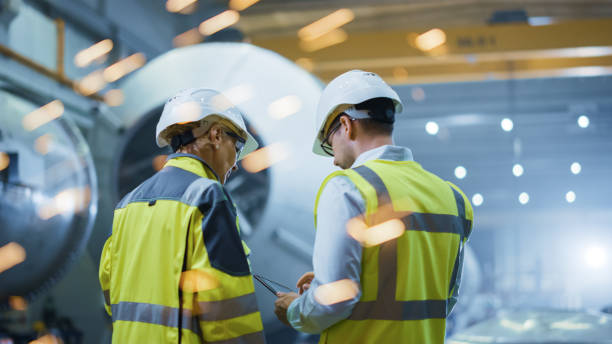What is the Process Involved in Steel Manufacturing?
One of the most popular materials for building, and producing tools and automobiles, as well as for many other uses, is steel. It is made of iron and another element, like chromium.
Although steel has been produced for a very long time, it wasn't until the 19th century that the process became widely commercialized. The development of several cutting-edge procedures during the 1850s and 1860s made steel production a well-established business. The subsequent technological developments in process control and injection technology have simplified the mass production of steel and made it a vital sector of the world economy.
Manufacturing
Large-scale steel production techniques were developed as a result of the Industrial Revolution.
To create different grades of steel, impurities like nitrogen, silicon, phosphorus, sulphur, and carbon must be removed from the iron used in the process. Manganese, nickel, chromium, and other metals may also be alloyed.
In addition to using traditional raw resources like iron ore, coal, and limestone, modern steel manufacturers now utilize recycled materials. Today, two processes—basic oxygen steelmaking (BOS) and electric arc furnaces—are used to produce nearly all the steel (EAF).
The six fundamental steps in the steel-making process are as follows:
1. Iron-Making
This is the initial process in the production of pure steel. In this process, a blast furnace is used to melt the raw ingredients such as iron ore, coal, and lime. This produces hot metal, commonly referred to as molten iron, which is brittle because of the impurities and remaining 4–5% carbon content. These must then be removed.
2. Primary Steel Making
Either BOS or EAF techniques are used to eliminate any leftover contaminants.
The molten iron in a converter is mixed with recycled or scrap steel in the BOS technique. High temperatures are used to push oxygen through the metal, which lowers the carbon content to 0-1.5%.
The EAF method involves feeding scrap steel through extremely powerful electric arcs, which melt the metal and produce high-quality steel.
The steel that is produced at the conclusion of this process using either method is referred to as raw steel.
3. Constant Casting
In this process, molten steel is cast into moulds that have cooled, which causes the steel to solidify. The steel is pulled from the moulds while it is still hot using guided rollers, and it is then allowed to cool and completely solidify. The material is then cut to the required lengths for the applications—beams, slabs, billets, etc.
4. Initial Forging
The cut steel is moulded into various shapes during primary forming, usually by hot rolling, which removes casting flaws and produces a desirable shape and surface quality. This procedure enables the production of seamless tubing, long, flat, and a variety of other specialty goods.
5. Making of Supplemental Steel
In order to produce different grades of steel, this stage entails treating the raw steel in various ways. Adding or removing certain components, changing the temperature, or changing the production environment are all examples of this.
The additional processes that must be used depending on the ultimate grade of steel that is needed. These could consist of
• Swishing
• Adjusting the thermostat
• Ladle infusion
• Gases are expelled
• CAS-OB
6. Secondary Forming
The secondary forming procedure is the last phase, giving the steel its final shape and qualities. Various techniques can be applied at this stage, which involves
• Heat treatment (tempering)
• Joining (welding)
• Shaping (cold rolling)
• Coating (galvanising)
• Machining (drilling)
• Surface treatment (carburising)
This is the basic process of manufacturing a steel. There are 4 different type of steel used in construction and you will find the best steel for construction here.




Comments
Post a Comment